Recent Publications

Afif Nakhleh: Use of prescription opioids in Israel and socio-economic correlations between 2010 and 2020 (Isr J Health Policy Res .)
The use of opioids has increased dramatically over the past several years in Israel. The aim of this study was to explore the trends of opioid consumption in Israel over a decade (2010-2020) stratified by socioeconomic status (SES), residence in the periphery, and ethnic background.

Edo Y Birati: Emergency Department Use and Hospital Mortality Among Heart Transplant Recipients in the United States (J Am Heart Assoc .)
Annual heart transplant (HT) volumes have increased, as have post-HT outpatient care needs. Data on HT-related emergency department (ED) visits are limited.

Amir Mari, Tawfik Khoury, Wisam Abboud: Approach to esophageal absent contractility: can we do better? (Ann Gastroenterol .)
Absent contractility (AC), a motility disorder characterized by the absence of esophageal contractions while maintaining normal lower esophageal sphincter relaxation, is recognized as a distinctive major disorder of peristalsis on esophageal high-resolution manometry that warrants comprehensive understanding. This unique motility disorder often co-occurs with connective tissue, rheumatologic or autoimmune diseases, with scleroderma being the classic example. Symptoms of gastroesophageal reflux are common. AC can profoundly impact patients' lives and result in a spectrum of complications, including erosive esophagitis, esophageal candidiasis, Barrett's esophagus, and malnutrition. To address the intricate complexities of AC and its multifaceted complications, a multidisciplinary approach is paramount.
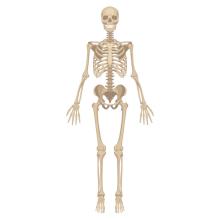
Naama Tova Cohen, Khalaf Kridin: Vitiligo is associated with new-onset osteoporosis: a retrospective cohort study (Arch Dermatol Res .)
Vitiligo, an acquired deficiency of melanocyte function and number, is linked to autoimmunity. The association of osteoporosis with vitiligo has never been investigated in a clinical study. Numerous studies reported lower serum vitamin D levels in individuals with vitiligo. As low vitamin D is associated with osteoporosis, in the current study, we investigated if patients with vitiligo are at increased risk of developing osteoporosis in the large Clalit Health Services (CHS) database.

Yelena Aizenberg, Dalit Porat Ben Amy: From Pixels to Diagnosis: Algorithmic Analysis of Clinical Oral Photos for Early Detection of Oral Squamous Cell Carcinoma (Cancers (Basel) . )
Oral squamous cell carcinoma (OSCC) accounts for more than 90% of oral malignancies. Despite numerous advancements in understanding its biology, the mean five-year survival rate of OSCC is still very poor at about 50%, with even lower rates when the disease is detected at later stages. We investigate the use of clinical photographic images taken by common smartphones for the automated detection of OSCC cases and for the identification of suspicious cases mimicking cancer that require an urgent biopsy.
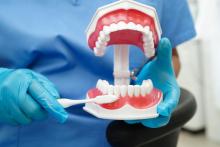
Avi Peretz: Impact of dental clearance on bacteremia in hematopoietic cell transplantation (Oral Dis .)
Infection is a concern in hematopoietic cell transplantation (HCT), being leading cause of morbidity and mortality (Gudiol et al., 2014). Consequently, guidelines recommend the pre-HCT elimination of oral infectious sites, known as dental clearance, in order to mitigate systemic dissemination (Rankin et al., 2008; Yamagata et al., 2006) and avert fatalities (Elad et al., 2008). Nevertheless, certain studies have reported no discernible improvement following pre-HCT dental clearance (Hong et al., 2018), doubts its necessity.

Karl Skorecki, Etty Kruzel-Davila: APOL1 nephropathy - a population genetics success story (Curr Opin Nephrol Hypertens .)
More than a decade ago, apolipoprotein L1 (APOL1) risk alleles designated G1 and G2, were discovered to be causally associated with markedly increased risk for progressive kidney disease in individuals of recent African ancestry. Gratifying progress has been made during the intervening years, extending to the development and clinical testing of genomically precise small molecule therapy accompanied by emergence of RNA medicine platforms and clinical testing within just over a decade.

Inshirah Sgayer, Tomer Yehuda Fishman, Lior Lowenstein, Maya Frank Wolf: Obesity-related maternal complications during the COVID-19 pandemic (Obstet Med .)
Compares gestational weight gain (GWG) during pregnancy and obesity-related maternal morbidity between three months of the first year of the COVID-19 pandemic and three months of the previous year.

Thyroid US-guided FNA techniques: A prospective, randomized controlled study (Am J Otolaryngol .)
Thyroid nodules are common in the general population. Ultrasonography is the most efficient diagnostic approach to evaluate thyroid nodules. The US FNAC procedure can be performed using either the short axis (perpendicular), or a long axis (parallel) approach to visualize the needle as it is advanced toward the desired nodule. The main aim of this study was to compare the percentage of non-diagnostic results between the long and short axis approach.
(Sarah Cohn, Raed Farhat, Nidal El Khatib, Majd Asakly, Ashraf Khater, Alaa Safia, Marwan Karam, Saqr Massoud, Taiser Bishara, Yaniv Avraham, Adi Sharabi-Nov, Shlomo Merchavy)
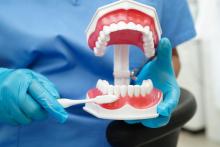
Computer-Assisted Evaluation Confirms Spontaneous Healing of Donor Site One Year following Bone Block Harvesting from Mandibular Retromolar Region-A Cohort Study (Diagnostics (Basel). )
Bone augmentation prior to dental implant placement is a common scenario in the dental implantology field. Among the important intraoral harvesting sites to obtain bone blocks is the ramus/retromolar region that has a high success rate and long-lasting alveolar ridge augmentation. Preserving the bone volume and quality at the donor site is crucial for preventing further complications or to serve as a site for re-harvesting. Healing of the intraoral donor sites has been described in the maxillofacial field. This study aimed to evaluate the spontaneous healing of the mandibular retromolar donor site utilizing computer-assisted quantification 6 and 12 months after bone harvesting.
(Shadi Daoud, Adeeb Zoabi, Adi Kasem, Amir Totry, Daniel Oren, Idan Redenski, Samer Srouji, Fares Kablan)
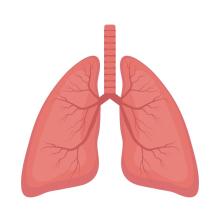
Uriel Trahtemberg: Using a targeted metabolomics approach to explore differences in ARDS associated with COVID-19 compared to ARDS caused by H1N1 influenza and bacterial pneumonia (Crit Care .)
Acute respiratory distress syndrome (ARDS) is a life-threatening critical care syndrome commonly associated with infections such as COVID-19, influenza, and bacterial pneumonia. Ongoing research aims to improve our understanding of ARDS, including its molecular mechanisms, individualized treatment options, and potential interventions to reduce inflammation and promote lung repair. Objective: To map and compare metabolic phenotypes of different infectious causes of ARDS to better understand the metabolic pathways involved in the underlying pathogenesis.

O Amir: Sudden cardiac death prevention in the era of novel heart failure medications (Am Heart J Plus . )
Sudden cardiac death (SCD) occurs unexpectedly and is usually a result of ventricular arrhythmia in patients with structural heart disease....In this review, we highlight the pathophysiological mechanisms of the new drug agents, and evaluate the possible effect they could have on the role of device therapy as a primary prevention of SCD.

Rotem Kahalon: Exploring women's strong preference for women surgeons in breast healthcare (World J Surg . )
This study challenges the prevalent belief that surgical roles demand masculine traits, potentially limiting women's suitability for such positions. Contrary to this stereotype, we explored the hypothesis that in sensitive surgical procedures, where communal traits are valued, women patients might favor women surgeons. Two experimental studies investigated women's preferences for a man versus a woman surgeon in a breast exam and breast surgery.

Adi Eshel, Lelyan Moadi, Sondra Turjeman, Omry Koren: Children with idiopathic short stature have significantly different gut microbiota than their normal height siblings: a case-control study (Front Endocrinol (Lausanne) .)
Objectives: To investigate the role of gut microbiota (GM) in pathogenesis of idiopathic short stature (ISS) by comparing GM of ISS children to their normal-height siblings.
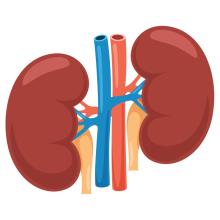
Khaled Khazim, Fedaa Ghanem: Renal Disease in Metabolic Syndrome: the Hidden Role of Intrarenal Ischemia (Kidney Int Rep .)
The pathogenesis of renal disease in obesity and metabolic syndrome (MS) is mostly unknown. This is in part because of the limited information about renal morphological changes in these conditions. We evaluated renal histology in subjects with MS and those without MS, who are participants in the European Nephrectomy Biobank (ENBiBA) project.
CORRIGENDUM: https://pubmed.ncbi.nlm.nih.gov/39990884/



